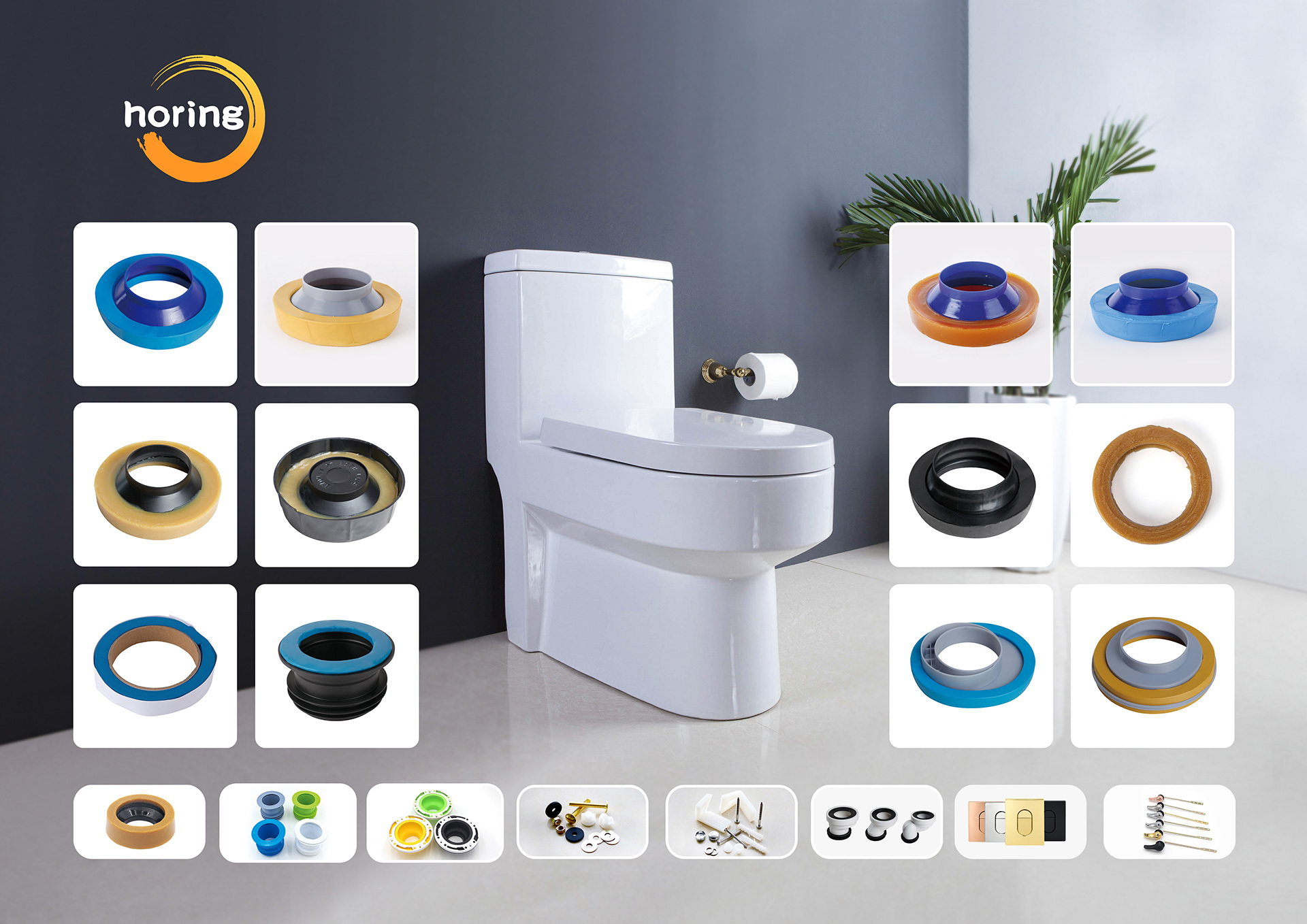Essential Guide to Choosing the Right Toilet Bowl Gasket Kit
Release Time:
Jun 06,2025
Source:
Essential Guide to Choosing the Right Toilet Bowl Gasket Kit
Choosing the right toilet bowl gasket kit is crucial for ensuring a secure and leak-free installation. With various options available on the market, understanding the types, features, and installation processes is essential. In this guide, we will cover everything you need to know about toilet bowl gaskets, from selecting the right type to installation and maintenance.
Table of Contents
- What is a Toilet Bowl Gasket Kit?
- Importance of a Quality Gasket
- Types of Toilet Bowl Gaskets
- How to Choose the Right Gasket
- Installation Process for Toilet Bowl Gaskets
- Common Issues and Solutions
- Maintenance Tips for Toilet Bowl Gaskets
- Frequently Asked Questions
- Conclusion
What is a Toilet Bowl Gasket Kit?
A toilet bowl gasket kit is a set of components used to create a watertight seal between the toilet bowl and the toilet flange on the floor. This kit typically includes a gasket made from rubber or wax, along with additional hardware like bolts and washers. The primary function of this kit is to prevent leaks and ensure that the toilet operates efficiently.
Importance of a Quality Gasket
The quality of the gasket you choose can significantly impact your toilet's performance. A high-quality gasket will:
- Prevent Leaks: A well-fitted gasket creates a seal that stops water from leaking onto your bathroom floor.
- Enhance Longevity: Durable materials resist wear and tear, extending the life of your toilet.
- Reduce Odors: A proper seal prevents sewage gases from escaping, keeping your bathroom smelling fresh.
Types of Toilet Bowl Gaskets
When choosing a gasket kit, it's essential to understand the different types available:
1. Wax Gaskets
Wax gaskets are the most common type. They are made of wax and provide a reliable seal. These gaskets conform to the shape of the toilet and flange, creating a strong bond. However, they can be susceptible to damage if not installed correctly.
2. Foam Gaskets
Foam gaskets offer a modern alternative to wax. Made from a dense foam material, they are easier to install and less messy than their wax counterparts. Foam gaskets are also resistant to moisture, which enhances their durability.
3. Rubber Gaskets
Rubber gaskets are less common but are known for their flexibility and durability. They are often used in toilet installations where movement is expected, such as in mobile homes. Rubber gaskets can provide a reliable seal but may require more frequent replacement.
How to Choose the Right Gasket
Selecting the right toilet bowl gasket involves considering several factors:
1. Type of Toilet
Different toilets may require specific types of gaskets. Always consult your toilet's manual or manufacturer for recommendations.
2. Installation Environment
Consider the environment where the toilet is installed. For instance, in high-humidity areas, foam or rubber gaskets may perform better than wax.
3. Ease of Installation
If you are a DIY enthusiast, you may prefer gaskets that are easier to install, such as foam gaskets, which do not require the same level of precision as wax gaskets.
4. Cost and Quality
While it may be tempting to choose the least expensive option, investing in a high-quality gasket can save you from costly repairs down the line.
Installation Process for Toilet Bowl Gaskets
Proper installation of your toilet bowl gasket kit is vital for preventing leaks. Follow these steps for a successful installation:
Step 1: Gather Necessary Tools
Before you begin, gather all the tools you'll need, including a wrench, screwdriver, and a putty knife.
Step 2: Remove the Old Toilet
Turn off the water supply and flush the toilet to empty the tank. Disconnect the water line and remove the nuts securing the toilet to the floor. Carefully lift the toilet off the flange.
Step 3: Clean the Flange
Use a putty knife to remove any wax residue or debris from the flange. A clean surface is essential for a proper seal.
Step 4: Install the New Gasket
Place the new gasket onto the flange. Ensure it is centered and flat against the surface. If using a wax gasket, make sure it adheres well to both the flange and the toilet base.
Step 5: Reinstall the Toilet
Carefully lower the toilet onto the flange, aligning the bolts with the holes in the base. Apply even pressure to compress the gasket slightly, then secure the toilet using nuts.
Step 6: Reconnect the Water Supply
Reconnect the water supply line and turn the water back on. Flush the toilet a few times to ensure there are no leaks.
Common Issues and Solutions
Even with proper installation, you may encounter issues with your toilet bowl gasket:
1. Leaks
If you notice water pooling around the base of the toilet, it may indicate a faulty gasket. Check to ensure the gasket is installed correctly and replace it if necessary.
2. Odors
Foul odors can result from a poorly sealed gasket. Ensure the gasket is intact and fits snugly to prevent sewage gases from escaping.
3. Toilet Movement
If your toilet wobbles, it may not be secured properly to the flange. Tighten the bolts carefully to ensure stability without over-tightening.
Maintenance Tips for Toilet Bowl Gaskets
To maximize the lifespan of your toilet bowl gasket, consider the following maintenance tips:
1. Regular Inspections
Periodically check for signs of leaks or wear around the base of the toilet. Early detection can prevent more significant issues.
2. Avoid Harsh Chemicals
When cleaning around the toilet, avoid using harsh chemicals that may degrade the gasket material. Opt for gentle cleaners instead.
3. Replace as Needed
Gaskets should be replaced as part of routine toilet maintenance, especially if you notice any signs of damage or leaks.
Frequently Asked Questions
1. How often should I replace my toilet bowl gasket?
It is recommended to replace your toilet bowl gasket every 5-10 years or whenever you notice leaks or other signs of wear.
2. Can I use a wax gasket more than once?
No, wax gaskets should only be used once. If you remove the toilet, it's best to install a new wax gasket for a proper seal.
3. What is the best type of gasket for a bathroom with high humidity?
Foam or rubber gaskets are typically better suited for high-humidity environments as they resist moisture better than wax.
4. Do I need to use a gasket with a new toilet?
Yes, a gasket is essential for ensuring a watertight seal between the toilet and the flange.
5. Can I install a toilet bowl gasket myself?
Yes, installing a toilet bowl gasket can be a DIY project. Just follow the installation steps carefully, and don't hesitate to consult resources if needed.
Conclusion
Choosing the right toilet bowl gasket kit is essential for maintaining a leak-free and efficient toilet. By understanding the types of gaskets available, how to select the right one, and the installation process, you can ensure that your toilet functions optimally. Regular maintenance and inspections will further extend the life of your gasket, providing peace of mind and a functional bathroom. With the knowledge gained from this guide, you are now equipped to make informed decisions regarding your toilet bowl gasket needs.
Related News



